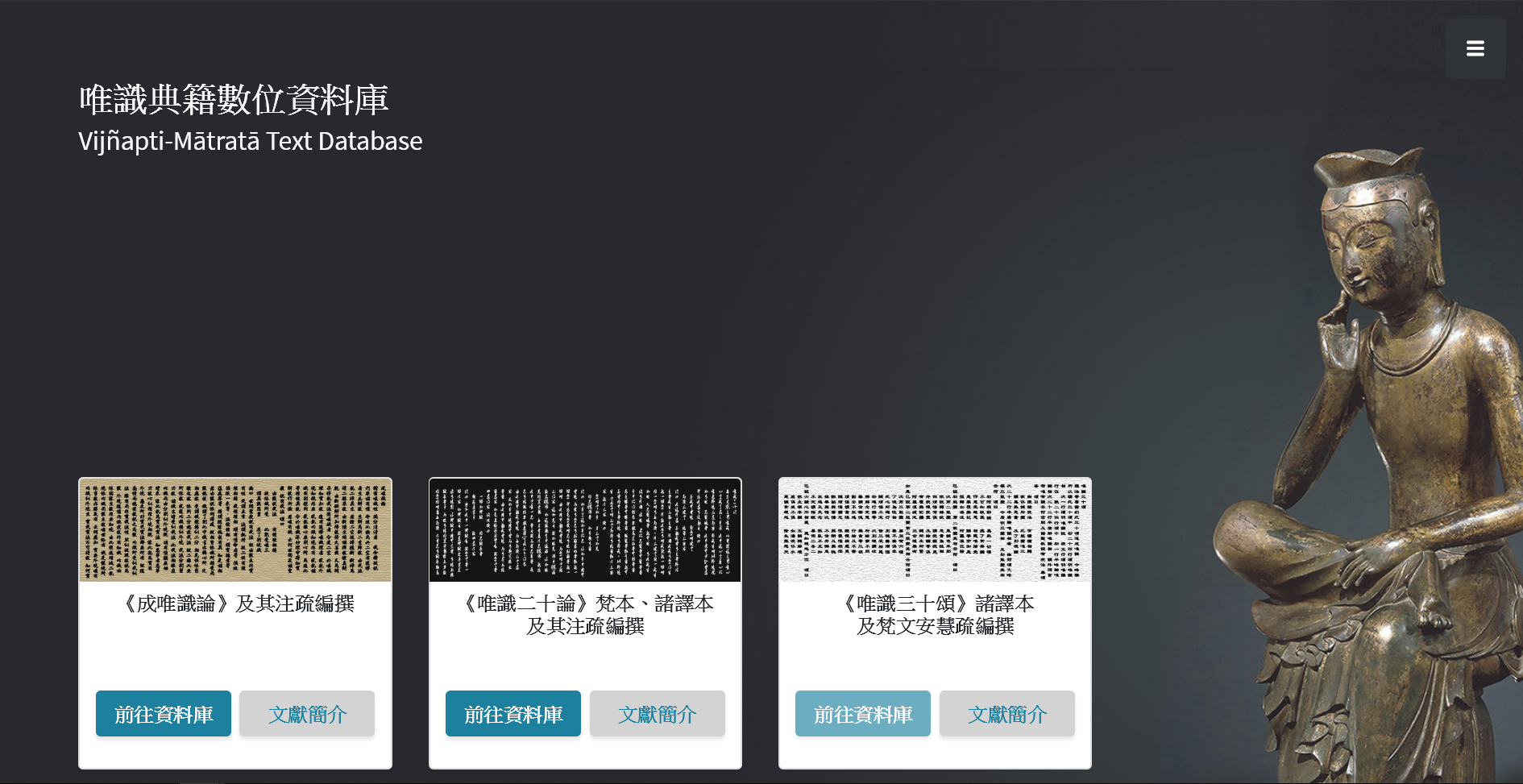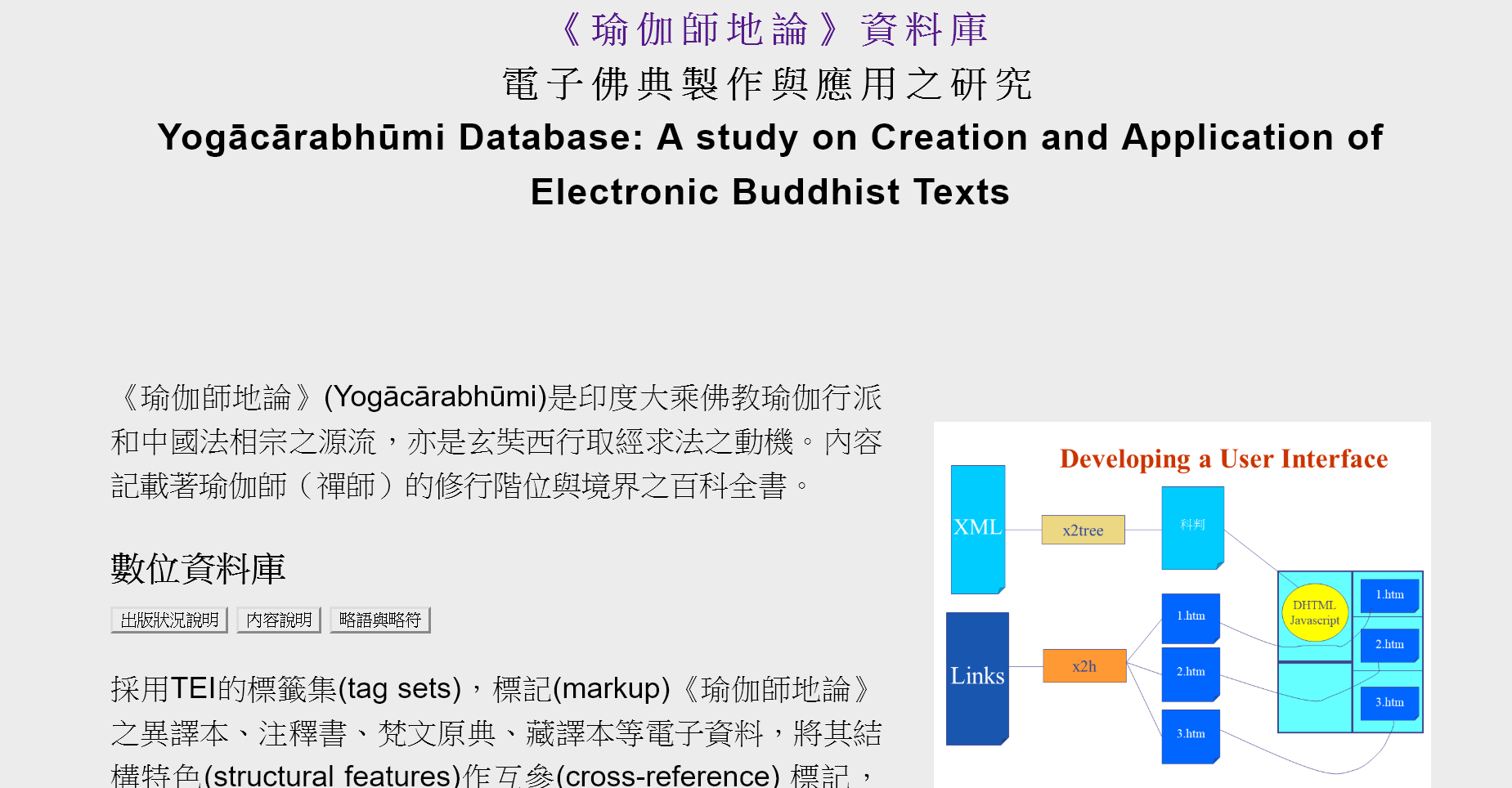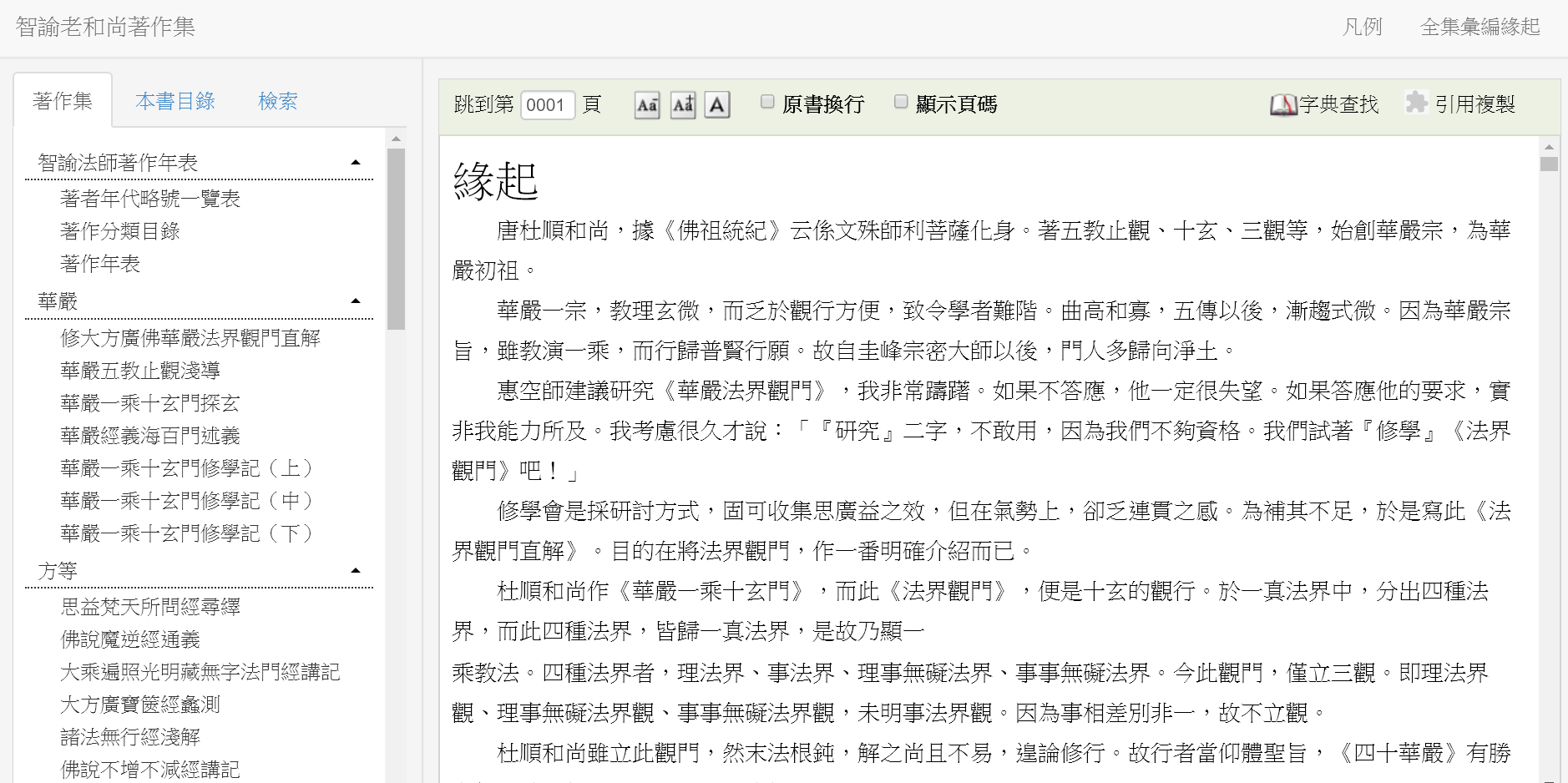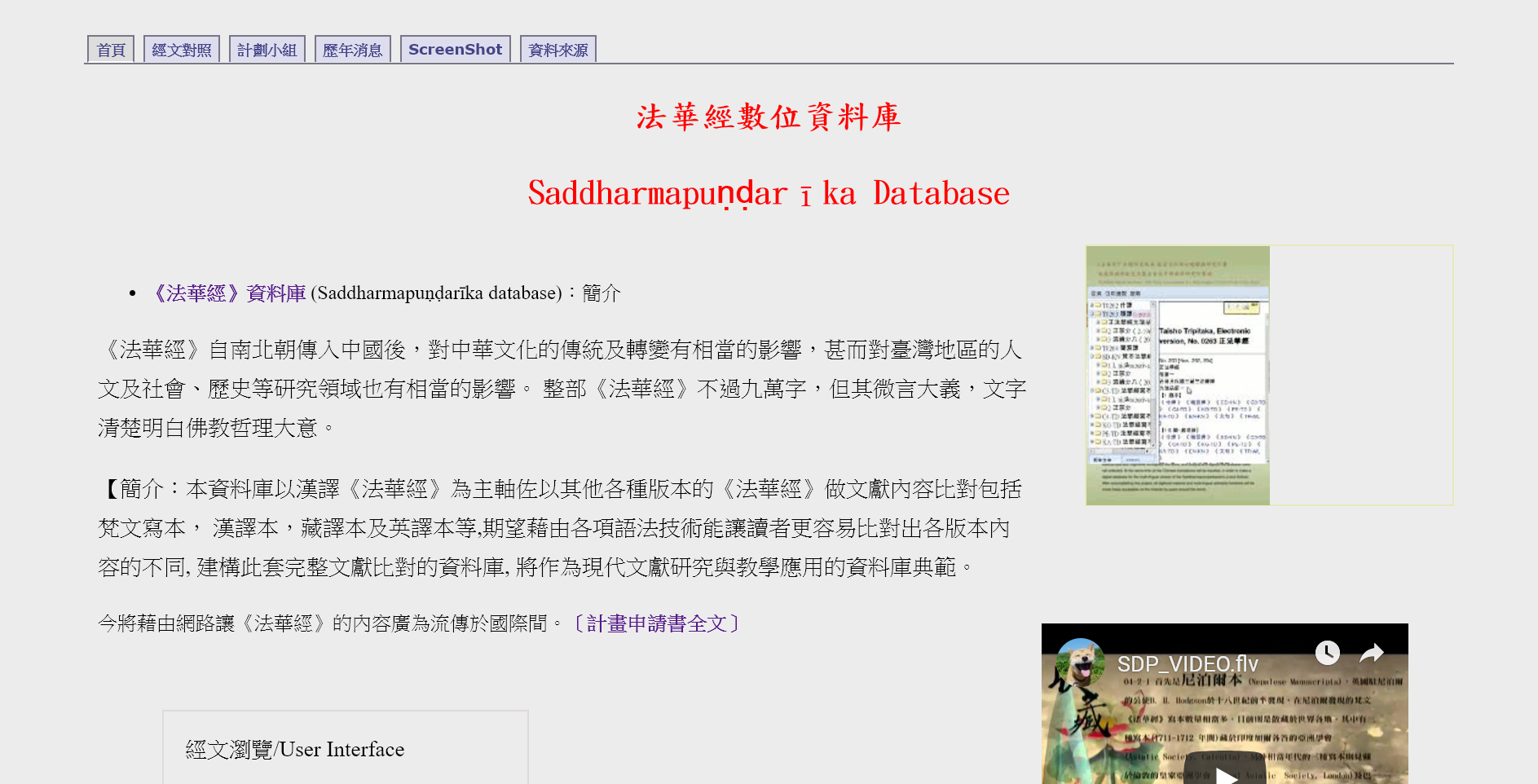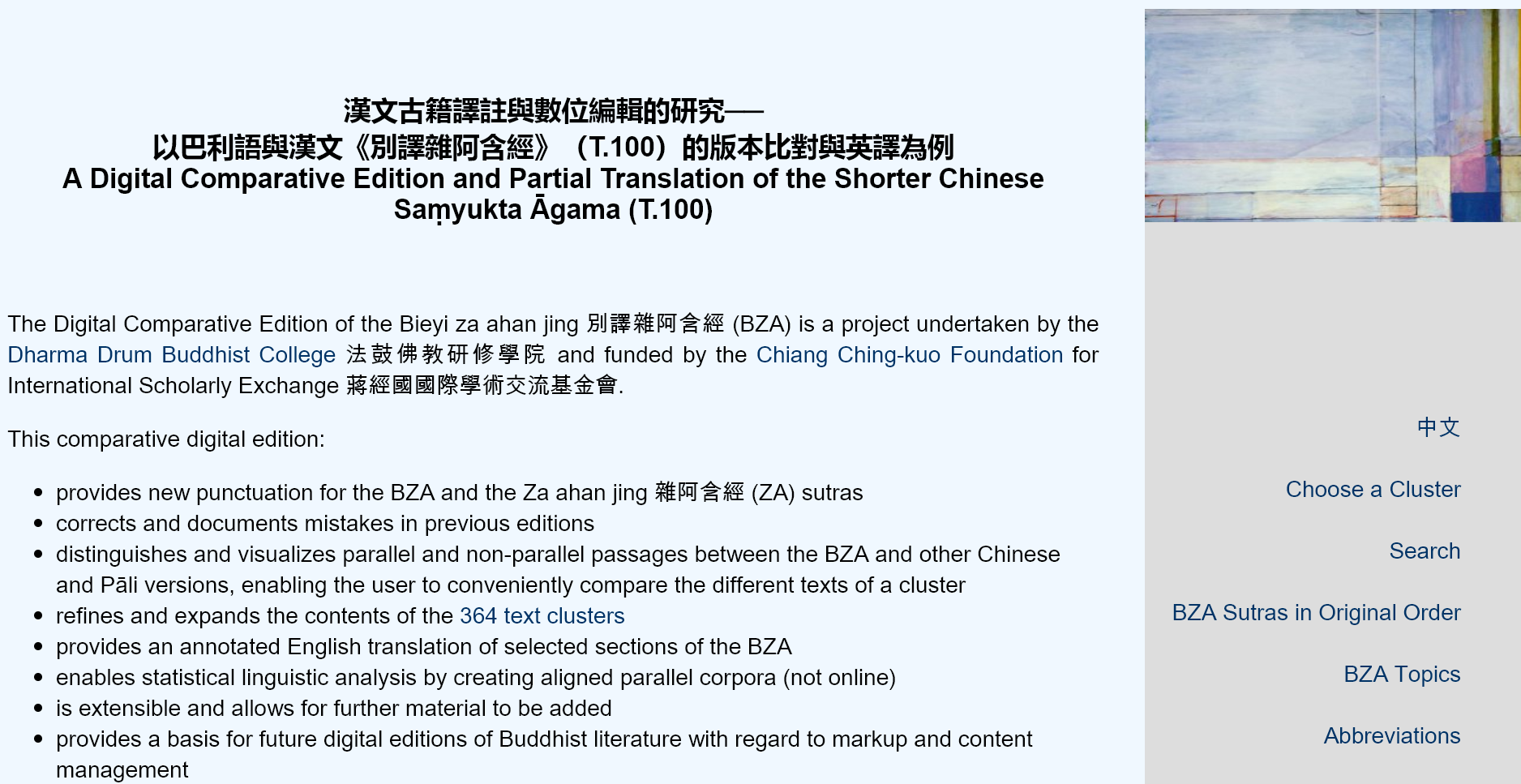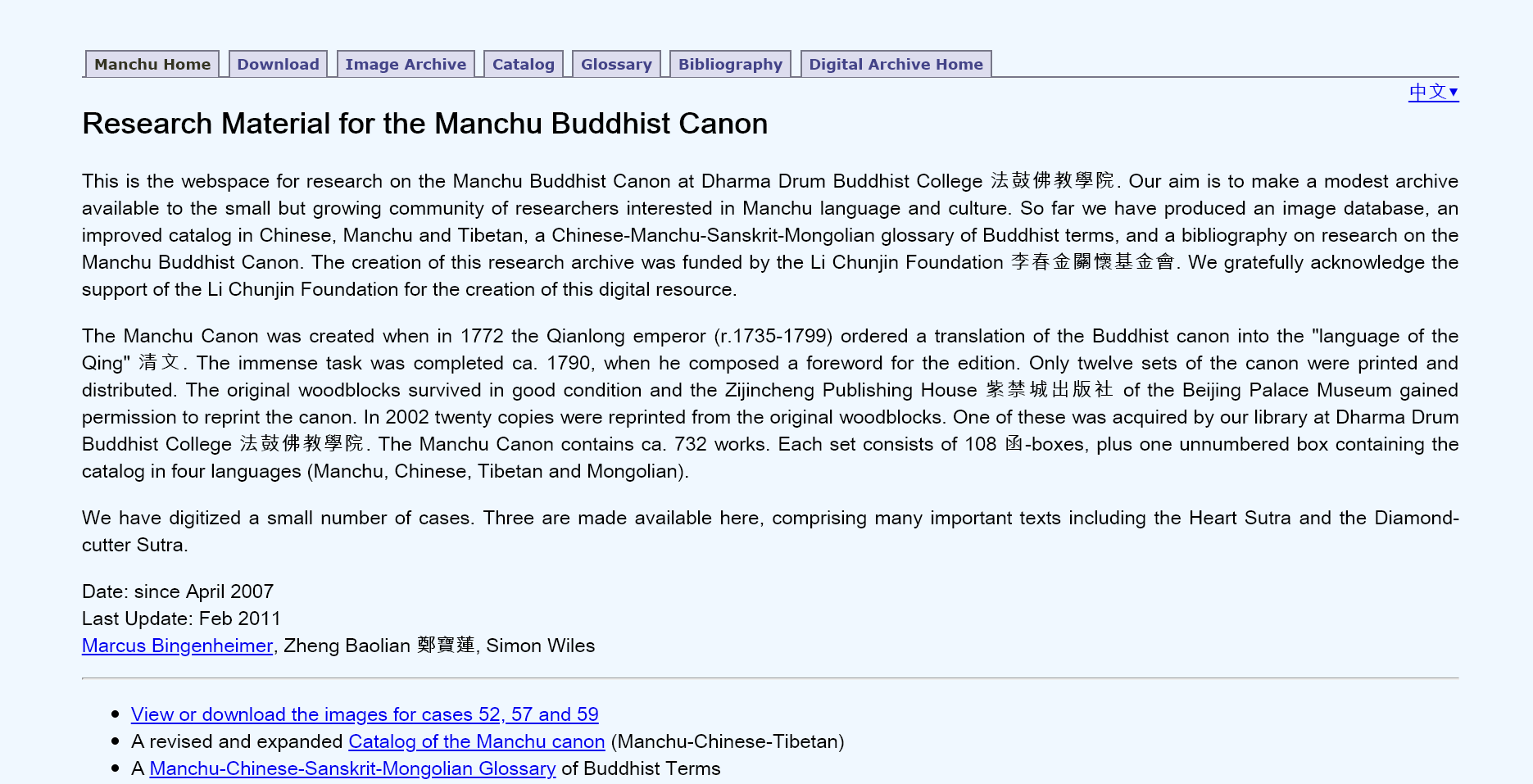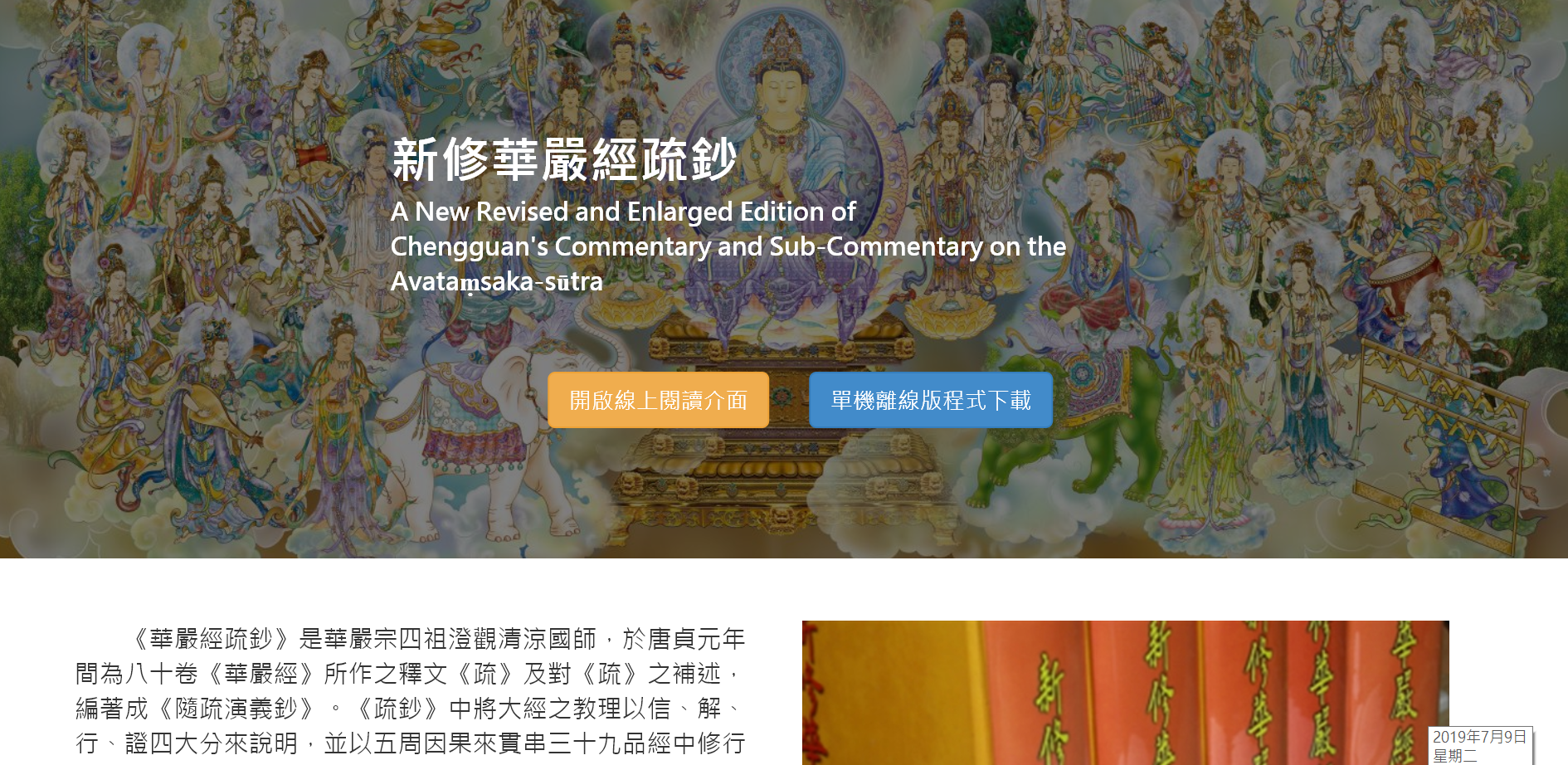Vijñapti-Mātratā Text Database
Vijñapti-Mātratā Text Database
The Vijñapti-Mātratā Text Database is jointly implemented by the Chunghwa Institute of Buddhist Studies and the Dharma Drum Institute of Liberal Arts. It is a multi-year, long-term project. Starting from the masterpiece of Consciousness-Only thought transmitted by Xuanzang, the Vijñapti-mātratā-siddhi-śāstra, the database was established successively year by year with the Viṃśatikā-vijñapti-mātratā-siddhi, the Triṁśikā-vijñapti-kārikā, the Madhyânta-vibhāga, the Saṃdhi-nirmocana-sūtra, the Mahāyānasaṃgraha and other important Consciousness-Only scriptures in a text comparison database integrating different Chinese translations and Sanskrit and Tibetan texts to enable researchers who study and research of the scriptures of Consciousness-Only, to easily and quickly understand the relationship and differences between the Chinese translations and the Sanskrit and Tibetan texts, and become a digital resource platform for the study of Consciousness-Only studies.
Feature:
Through digitization, the huge number of Consciousness-Only scriptures will be integrated and organised, and a search system will be constructed to enable rapid data searching and comparison, in addition to database editing functions, which will be more convenient and effective for research and teaching.
About:
The Vijñapti-Mātratā Text Database is jointly implemented by the Chunghwa Institute of Buddhist Studies and the Dharma Drum Institute of Liberal Arts. It is a multi-year, long-term project. Starting from the masterpiece of Consciousness-Only thought transmitted by Xuanzang, the Vijñapti-mātratā-siddhi-śāstra, the database was established successively year by year with the Viṃśatikā-vijñapti-mātratā-siddhi, the Triṁśikā-vijñapti-kārikā, the Madhyânta-vibhāga, the Saṃdhi-nirmocana-sūtra, the Mahāyānasaṃgraha and other important Consciousness-Only scriptures in a text comparison database integrating different Chinese translations and Sanskrit and Tibetan texts to enable researchers who study and research of the scriptures of Consciousness-Only, to easily and quickly understand the relationship and differences between the Chinese translations and the Sanskrit and Tibetan texts, and become a digital resource platform for the study of Consciousness-Only studies.
Content:
Depending on the text of this database, the main items and functions are integrated as follows:
- Schematic outline and comparison between texts.
- The integration of important commentaries and sub-commentaries.
- Corresponding characters and terms of various texts.
- Use of the ( ) and [ ] symbols to insert a folder for auxiliary reading.
- Sanskrit word analysis (if there is a Sanskrit text).
- Editorial notes.
- Schematic outline and text content search engine.
- Copy and citation.
- Download image and text in Word format.

